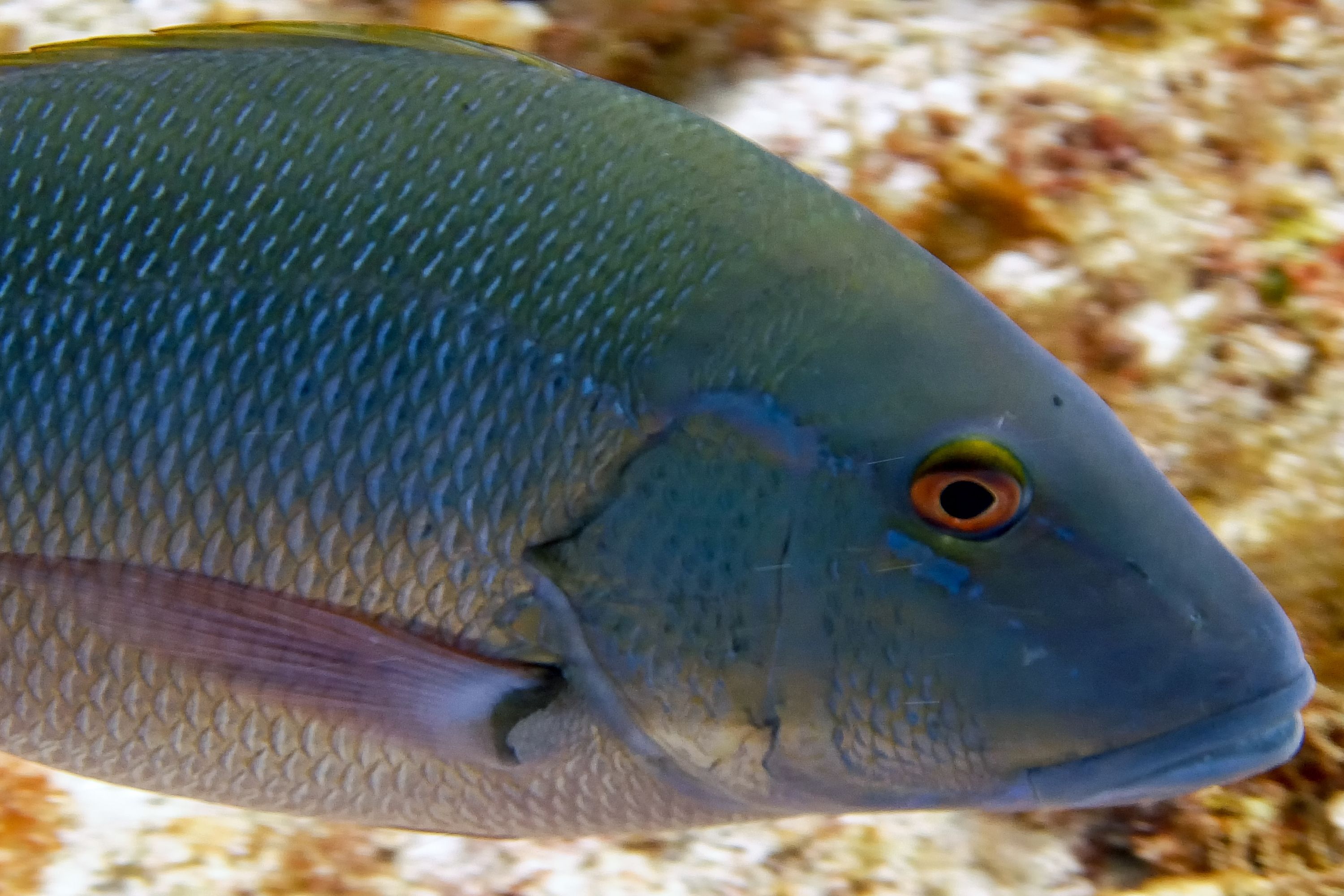Northern red snapper
(Lutjanus campechanus)

Description
The northern red snapper (Lutjanus campechanus) is a species of marine ray-finned fish, a snapper belonging to the family Lutjanidae. It is native to the western Atlantic Ocean, the Caribbean Sea, and the Gulf of Mexico, where it inhabits environments associated with reefs. This species is commercially important and is also sought-after as a game fish. The northern red snapper was first formally described in 1860 as Mesoprion campechanus by the Cuban zoologist Felipe Poey with the type locality given as Campeche in Mexico. The specific name reflects the type locality. The northern red snapper's body is very similar in shape to other snappers, such as the mangrove snapper, mutton snapper, lane snapper, and dog snapper. All feature a sloped profile, medium-to-large scales, a spiny dorsal fin, and a laterally compressed body. Northern red snapper have short, sharp, needle-like teeth, but they lack the prominent upper canine teeth found on the mutton, dog, and mangrove snappers. The northern red snapper is found in the Gulf of Mexico, the Caribbean Sea, and the southeastern Atlantic coast of Mexico and the United States and much less commonly northward as far as Massachusetts. In Latin American Spanish, it is known as mero, huachinango, pargo, or chillo. This species commonly inhabits waters from 9-60 m (30-200 ft), but can be caught as deep as 90 m (300 ft) on occasion. They stay relatively close to the bottom, and inhabit rocky bottoms, ledges, ridges, and artificial reefs, including offshore oil rigs and shipwrecks. Like most other snappers, northern red snapper are gregarious and form large schools around wrecks and reefs. These schools are usually made up of fish of very similar size. The preferred habitat of this species changes as it grows and matures due to increased need for cover and changing food habits. Newly hatched red snapper spread out over large areas of open benthic habitat, then move to low-relief habitats, such as oyster beds. As they near one year of age, they move to intermediate-relief habitats as the previous year's fish move on to high-relief reefs with room for more individuals. Around artificial reefs such as oil platforms, smaller fish spend time in the upper part of the water column while more mature (and larger) adults live in deeper areas. These larger fish do not allow smaller individuals to share this territory. The largest red snapper spread out over open habitats, as well as reefs.
Taxonomic tree:







